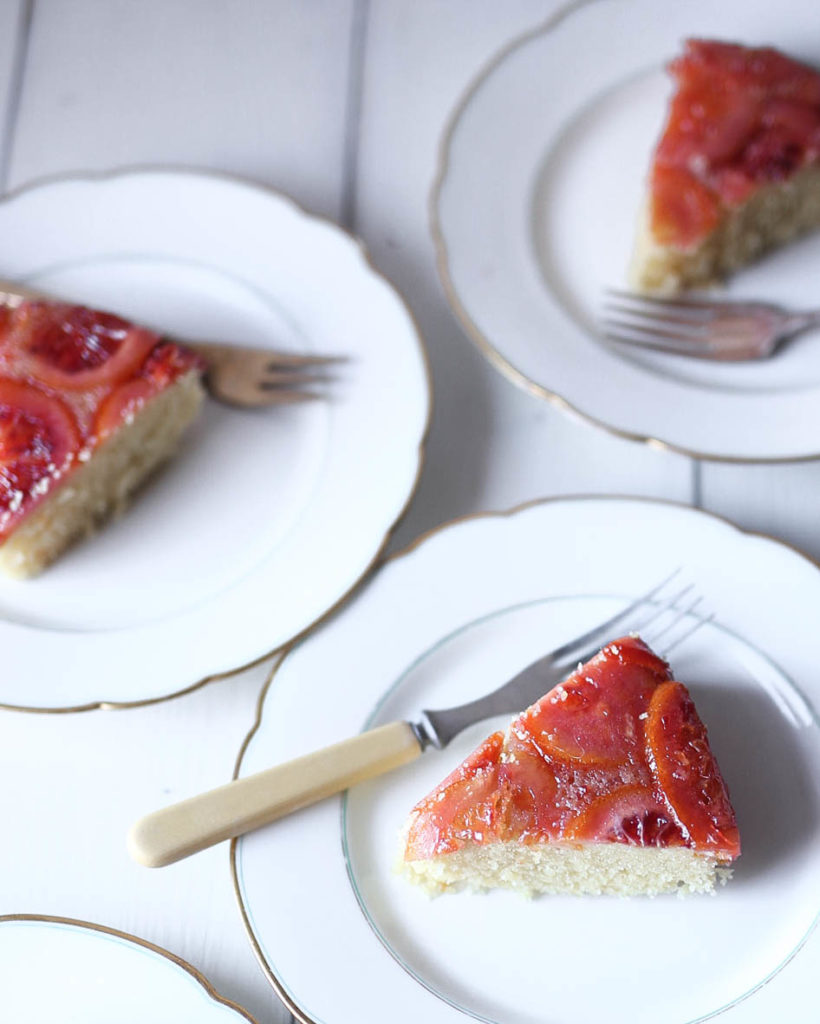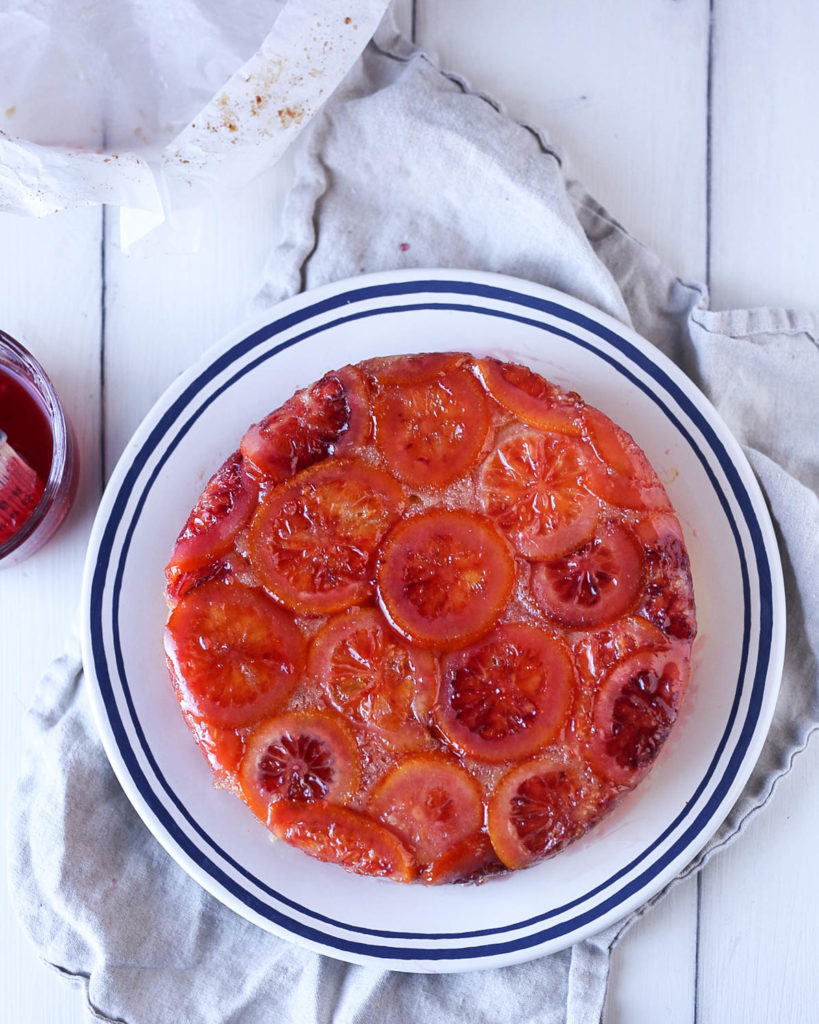My Favorite Blood Orange Upside Down Cake
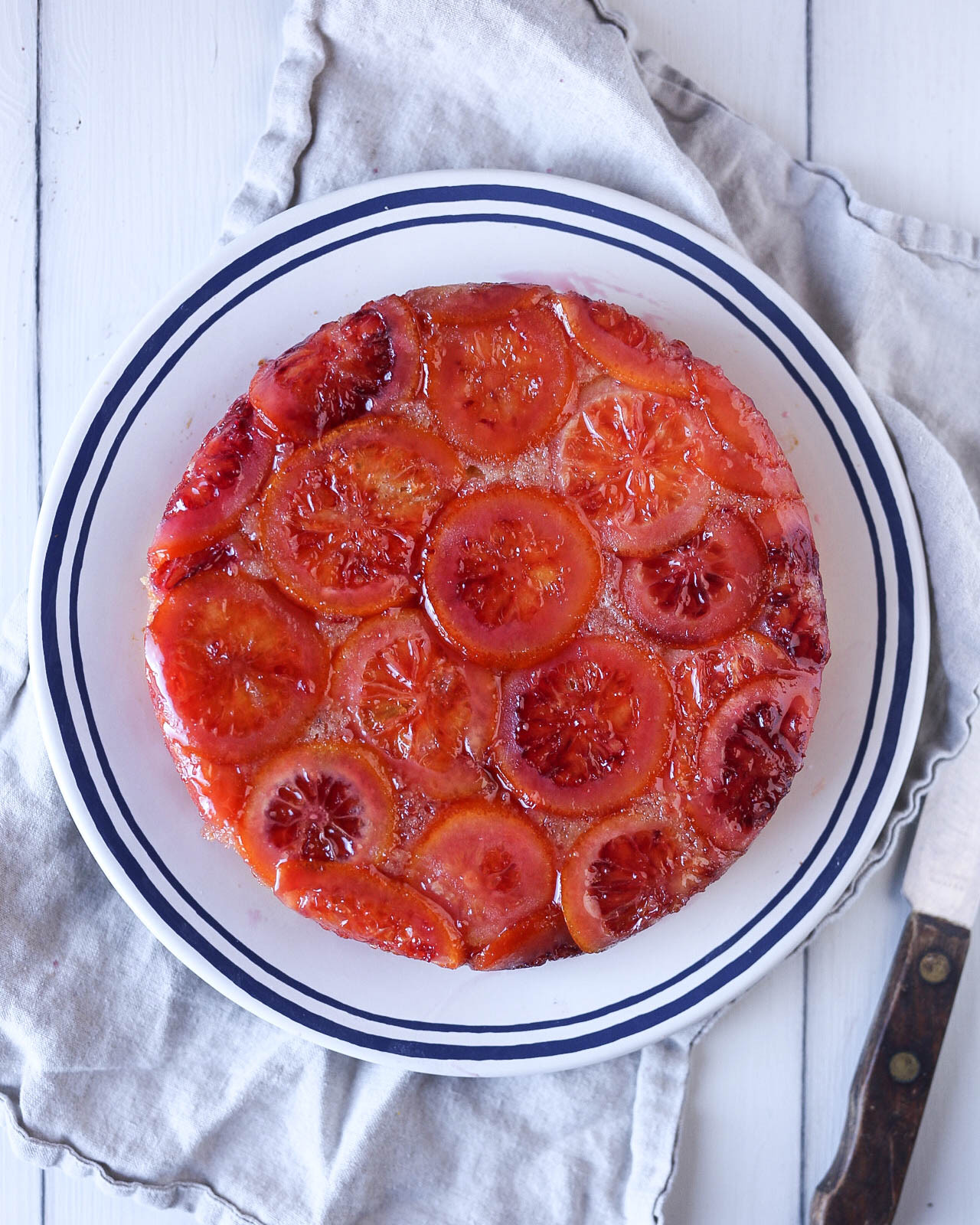
Winter, with all its cold and dreariness, is probably my least favorite season, but the appearance of blood oranges in the markets is one of its redeeming features. I buy them in bulk, impulsively, generally without a plan for how exactly I will use them. I’ve made blood orange-glazed doughnuts, a flaky tart, a blood-orange-scented chocolate bundt. But usually, I make an upside down cake.
While there are many blood orange upside down cake recipes out there, I inevitably return to this one, which is adapted from Not Quite Nigella’s aptly named “Spectacular Upside Down Blood Orange Cake.”
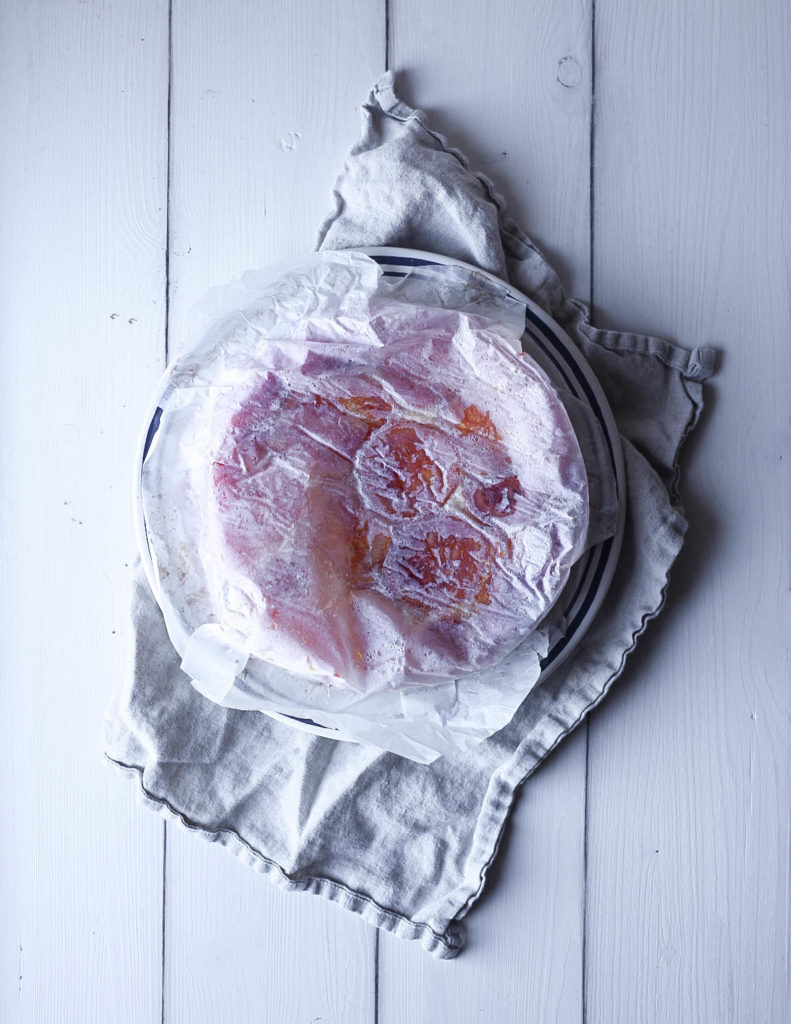
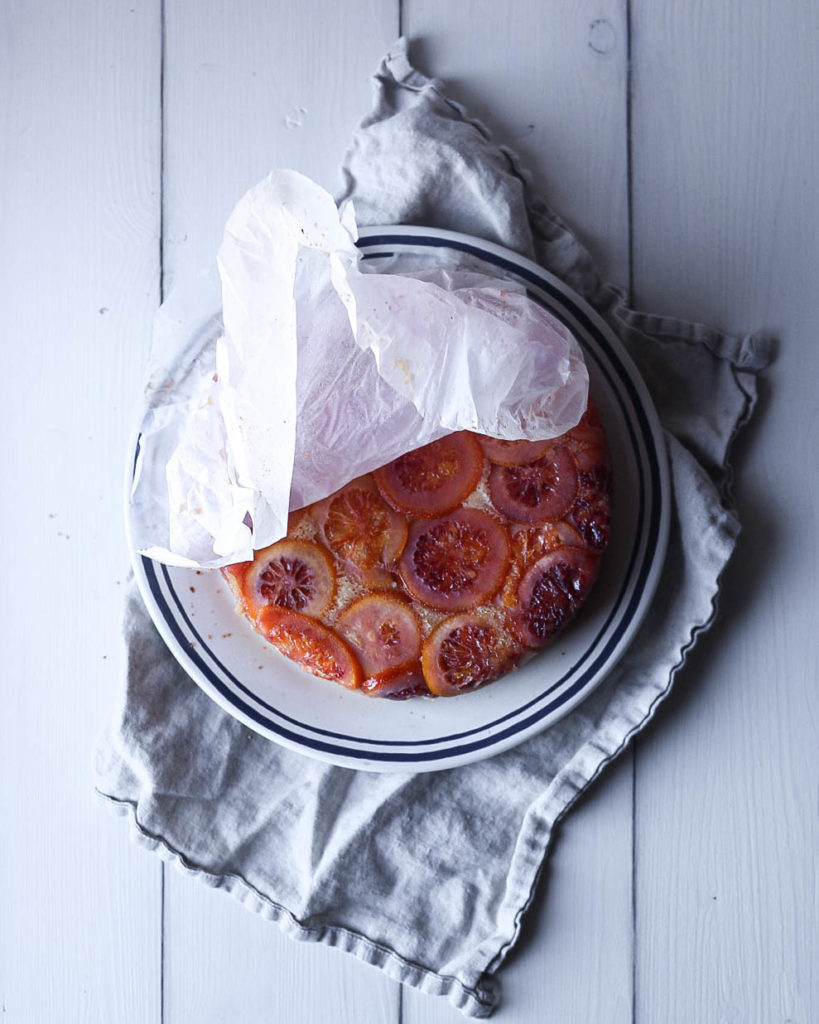
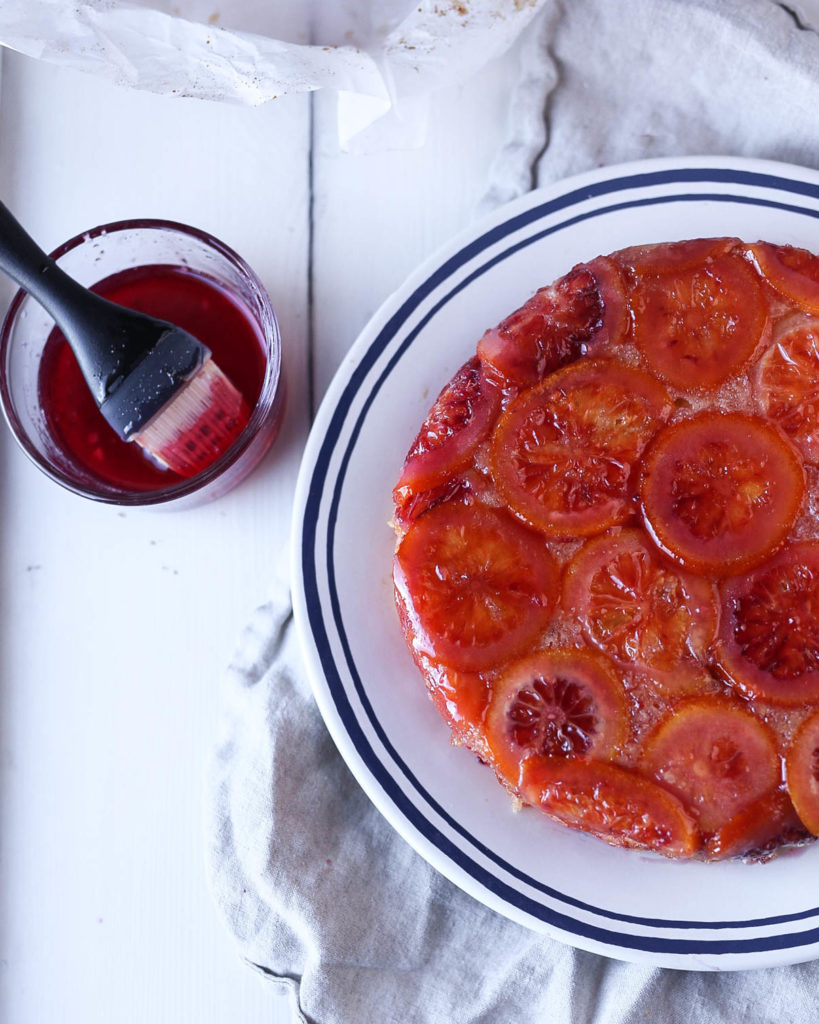
There are a few things that set this recipe apart. First, the blood orange slices are simmered in sugar syrup, which tames the bitterness of the pith and makes them gorgeously jewel-like. Second, the slightly sticky candied blood orange slices cover the entire interior of the parchment-lined pan, rather than simply being arranged on the bottom, enveloping the entire cake in blood orange goodness. Third, the syrup in which the blood orange slices were simmered gets boiled down further, and then brushed over the outside of the baked cake, taking the glossiness up a notch further. Fourth, the cake itself is delicious, somehow rich and light at the same time.
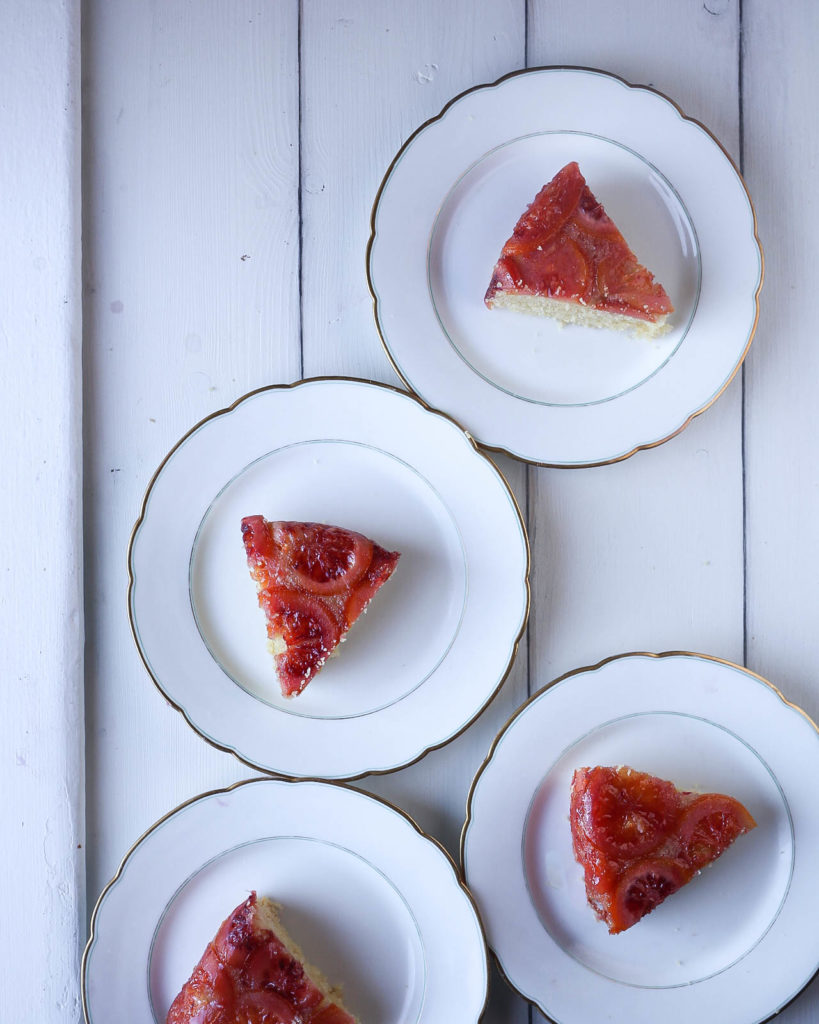
To be sure, the candied blood orange slices are a bit fiddly. But the cake itself–that is, the sponge–is a cinch, and the beauty and deliciousness of the finished cake far surpass the effort required to make it.
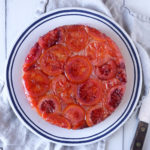
My Favorite Blood Orange Upside Down Cake
Adapted from Not Quite Nigella's "Spectacular Upside Down Blood Orange Cake."
Ingredients
For the blood oranges and glaze:
- 2-4 blood oranges – see notes
- 1/2 cup water
- 200 g granulated sugar
For the sponge:
- 134 g unsalted butter – at room temperature
- 134 g granulated sugar
- zest of one blood orange – finely grated
- 2 large eggs – at room temperature
- 1/4 tsp vanilla extract – optional
- 134 g almond flour or meal
- 67 g all-purpose flour
- 1 1/4 tsp baking powder
- 1/4 tsp table salt or fine sea salt
- 75 g Greek yogurt – preferably full-fat
Instructions
-
Preheat the oven to 325 F. Lightly grease an 8-inch cake pan with butter and then line it with a large (14- to 15-inch diameter) circle of baking parchment. The parchment will line the whole pan–not simply cover the bottom.
-
Using the sharpest knife you own (or a mandoline), thinly slice 2-4 blood oranges. You want slices no more than 1/8 inch thick.
-
In a medium non-reactive saucepan, combine 1/2 cup water and 200 g (1 cup) sugar over medium low heat, stirring occasionally until the sugar is dissolved. Once the sugar is dissolved, raise the heat to medium-high and add the blood orange slices. When the mixture comes to a boil, lower the heat to medium and simmer the blood orange slices for 10-15 minutes, until the pith is translucent.
-
Use a slotted spoon to remove the candied blood orange slices to a large plate or tray to cool slightly. Bring the syrup in the saucepan back to a boil and boil for 3-5 minutes, until further reduced and thickened. Transfer to a bowl and allow to cool to room temperature.
-
Meanwhile, begin lining the parchment-lined pan with the candied blood orange slices, allowing them to slighty overlap. Line both the bottom of the pan and the sides, bending the slices as necessary where the bottom and sides of the pan meet. If the blood orange slices are not adhering to the sides of the pan, use a little of the reduced blood orange syrup to help them stick. Set the pan aside while you make the sponge.

-
Make the sponge: Using an electric hand mixer or a stand mixer with the paddle attachment, cream together the butter, sugar, and grated blood orange zest until light and fluffy. Add the eggs, one at a time, mixing well after each and scraping down the bowl as necessary. Mix in the optional vanilla.
-
In a medium bowl, whisk together the almond flour, all-purpose flour, baking powder, and salt. Set aside.
-
Using a wooden spoon or silicone spatula, mix the yogurt into the batter. Now, fold in the dry ingredients; make sure they are well incorporated but avoid overmixing.
-
Spread the batter in the prepared pan, taking care not to dislodge the orange slices. Smooth the top, then transfer to the oven and bake 45-50 minutes, until the top is golden and a wooden skewer inserted in the center comes out clean.
-
Allow the cake to cool in the pan for 10 minutes, and then turn out onto a plate or serving platter. Gently remove the parchment. After the cake has cooled somewhat (20-30 minutes more), brush on some of the reserved blood orange syrup. Allow the cake to cool completely before slicing.
Recipe Notes
- The original Not Quite Nigella recipe makes a larger cake, in a 9-inch pan. If you want to make the cake using a 9-inch pan instead of an 8-inch pan, just increase the quantities above by 50%. The cake will probably need approximately 5-10 additional minutes in the oven.
- Some of my other changes to the original recipe include the additions of blood orange zest, vanilla extract, and salt to the batter. If you want, try a small amount of almond extract (1/8 or 1/4 tsp) in addition to or instead of the vanilla.
- The number of blood oranges you will need will depend on the size of the oranges, their firmness, whether you own a mandoline, and/or your knife skills. Even on my best days, I find slicing difficult once I’m about 2/3 of the way through an orange. This means that part of the oranges will be discarded–or you can juice the remnants and make impromptu blood orange mimosas!
- The cake is easiest to slice when it has been chilled. For the cleanest slices, chill the baked and cooled cake in the refrigerator for an hour or so before slicing.
